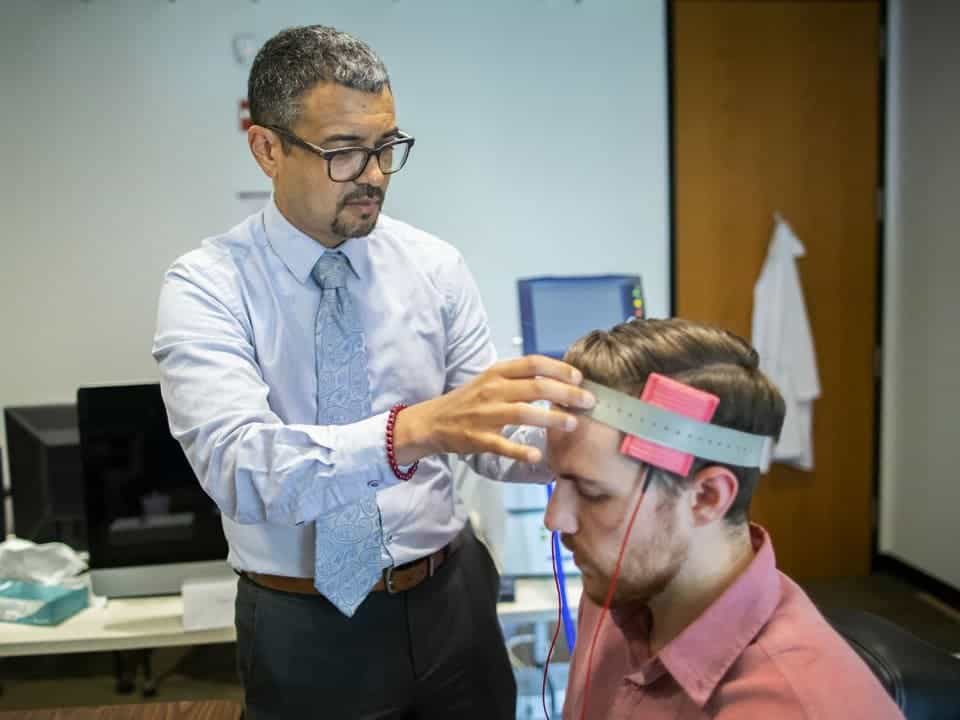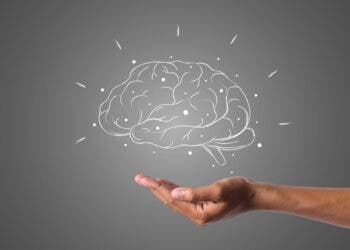
In a new study that’s sure to raise some eyebrows, researchers performed transcranial direct-current stimulation on volunteers (i.e. zapped their brains) and saw a significant reduction in violent tendencies. The procedure might be useful in treating some patients or criminals who suffer from mental illness and display aggressive, antisocial behavior.
The aggression trigger
It makes sense to target specific brain areas in order to elicit or inhibit certain behaviors. Our personalities are quite fragile, as Janet Cromer can attest. Cromer’s husband, Alan, used to have a personality which his wife described as being marked by “kindness, love, curiosity, and humor.” A severe anoxic brain injury following a massive heart attack and cardiac arrest, however, rewired Alan’s brain and changed his personality, turning the man into an incredibly moody individual marked by unpredictable bouts of anger and confusion. Cromer compared her husband to Jekyll and Hyde.
A 2009 study found that aggression is a common byproduct of traumatic brain injury (TBI), having a prevalence of 28.4% in a sample of 67 participants, predominantly as verbal aggression. And one cannot discuss traumatic brain injury and its potential to distort personality without mentioning the famous case of Phineas Gage, also known as “the man with a hole in his head.”

A railway worker in Vermont, US, Phineas was responsible for clearing away rocks in order for railway tracks to be laid down. For really big rocks, he would drill a hole in the ground, set explosives, then light a fuse to blow up the ruble. On September 13th 1848, this routine procedure took a turn for the worst when an iron rod scraped the side of a rock, lighting a spark that set off the gunpowder early. The iron rod — one meter long and 3 cm in diameter — plunged right into his skull, just under his left eye, landing some 30 meters away.
Phineas remarkably survived another 12 years, but his life was changed forever. The man became unpredictable, often swearing and making inappropriate remarks out of the blue. Psychiatrists today would class him as ‘disinhibited’, meaning he no longer cared for norms in a social and emotional context. For science, this was an important moment, however — Phineas’ case was one of the first to demonstrate that damage to the brain could affect our behavior and personality.
For some time, modern science has known that the prefrontal cortex is linked to the control of aggressive behavior, with damage to this brain area being associated with more violent and antisocial behavior. It was never clear, however, whether damage to prefrontal cortex drive violent behavior or some other reason might be at play.
A reverse lobotomy

Researchers at the University of Pennsylvania in Philadelphia and the Nanyang Technological University in Singapore designed an experiment in which they investigated what happened when they would stimulate the prefrontal cortex with electric currents.
“The ability to manipulate such complex and fundamental aspects of cognition and behavior from outside the body has tremendous social, ethical, and possibly someday legal implications,” said Roy Hamilton, a neurologist at Penn’s Perelman School of Medicine and the senior paper author.
They recruited 86 healthy adult participants, half of whom were given 20 minutes of non-invasive brain stimulation, half of whom were given a mild low-current stimulation for 30 seconds. This was a randomized double-blinded trial, meaning neither the participants nor the people running the experiment knew who was assigned what. Each participant was asked to read two hypothetical scenarios, one about a physical assault (someone bashing a glass on a fellow’s head for chatting up his girlfriend) and one about sexual assault (intimate foreplay leads to rape).
After the transcranial-stimulation sessions, each person was asked how likely they would be to picture themselves as the person perpetrating the violence in those scenarios, on a scale from 0 (completely unlikely) to 10 (extremely likely). They were also asked to rate how morally reprehensible these acts felt to them.
The people in the group who had the electrical stimulation were 47% and 70%, respectively, less likely to relate to the violent person depicted in the two scenarios than the control group (mild stimulation).
In order to pacify or treat extremely violent individuals suffering from various mental illness, historically, doctors have always manipulated the brain in some way. In the past, for instance, frontal lobotomies — an extremely invasive procedure that involves severing fiber tracts connected to the frontal lobe — were routinely used.
Now, rather than removing parts of the brain linked to potentially aggressive behavior, the team of researchers chose to stimulate them. Counter-intuitively to the old school of thought, violent tendencies were actually reduced.
“Historically we haven’t taken this kind of approach to interventions around violence. But this has promise. We only did one 20-minute session, and we saw an effect. What if we had more sessions? What if we did it three times a week for a month?” said psychologist Adrian Raine, a Penn Integrates Knowledge Professor and co-author on the paper.
The findings suggest that this simple, non-invasive biological intervention — either separate or in conjunction with traditional psychological interventions such as cognitive behavioral therapy — could have the potential to reduce violent behavior at large. Before this happens, however, more studies are needed to assess the efficacy of the procedure; the findings need to be replicated and validated with a larger sample size. Additionally, the long-term effects of such an intervention need to be assessed.
“This is not the magic bullet that’s going to wipe away aggression and crime,” Raine says. “But could transcranial direct-current stimulation be offered as an intervention technique for first-time offenders to reduce their likelihood of recommitting a violent act?”
“Perhaps,” Hamilton concludes, “the secret to holding less violence in your heart is to have a properly stimulated mind.”
The findings appeared in the Journal of Neuroscience.






